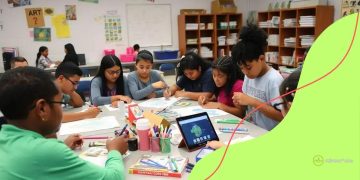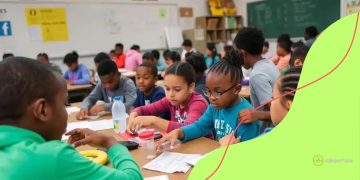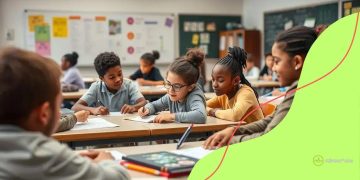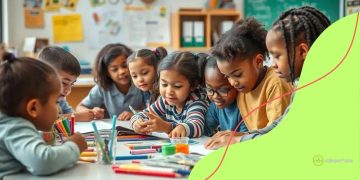Fostering creativity and innovation in the classroom
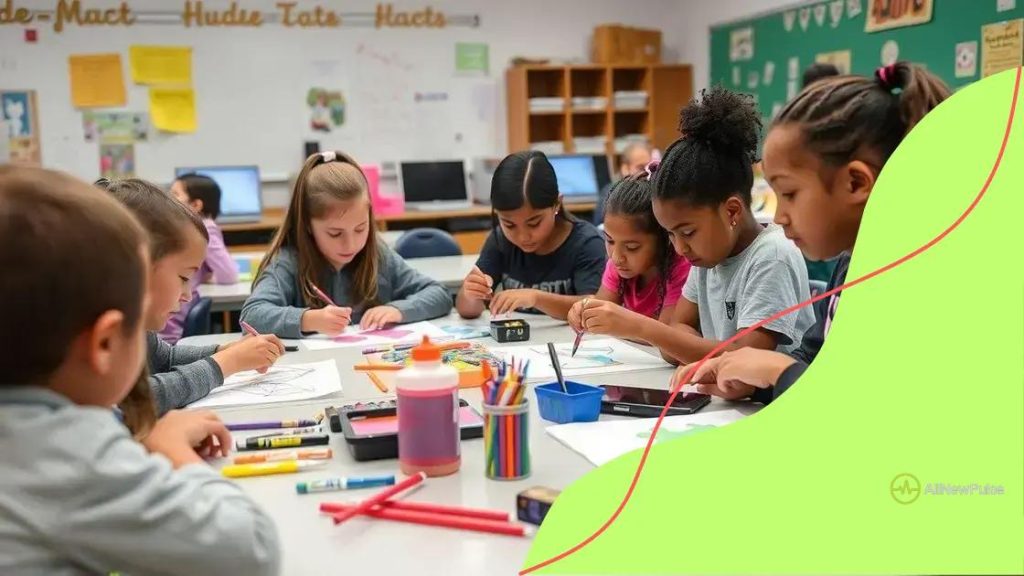
Fostering creativity and innovation in the classroom enhances student engagement, promotes teamwork through collaboration, and integrates technology to develop critical thinking skills essential for future success.
Fostering creativity and innovation in the classroom is essential for developing future-ready students. Have you ever wondered how a few changes can engage learners in new and exciting ways?
Understanding the importance of creativity in education
Understanding the importance of creativity in education is vital for fostering an engaged learning environment. Creativity encourages students to explore new ideas and think critically. When students are creative, they can solve problems in unique ways and are more motivated to learn. So, what makes creativity in education so essential?
Benefits of Creativity in Education
Creativity plays a crucial role in helping students develop essential skills for the future. It nurtures their decision-making abilities and enhances their learning process.
- Promotes critical thinking
- Encourages personal expression
- Increases student engagement
- Boosts confidence in problem-solving
Furthermore, a creative classroom fosters collaboration among students, allowing them to share their ideas and learn from each other. This environment can lead to higher achievement levels and better overall outcomes.
How Creativity Enhances Learning
When students engage in creative activities, they not only retain information better but also improve their analytical skills. Creativity helps in making learning more enjoyable, leading to a positive attitude towards education. Imagine a classroom where students are excited to participate and express their ideas freely.
Incorporating creative elements such as art, music, and drama into lessons can spark interest and curiosity. For instance, using stories can help students relate to complex subjects, making them easier to understand. Engaging with the material in various ways allows students with different learning styles to thrive.
Emphasizing creativity in education also prepares students for future challenges. As they learn to navigate through new situations with innovative thinking, they develop resilience and adaptability. These skills are crucial in today’s fast-changing world.
Techniques to boost innovative thinking
Techniques to boost innovative thinking can significantly enhance the learning experience in the classroom. By focusing on practical methods, educators can inspire students to think outside the box. Implementing simple strategies can create a more dynamic learning environment.
Encouraging Mind Mapping
Mind mapping is a powerful tool that helps students organize their thoughts visually. By creating a mind map, students can explore connections between ideas and concepts. This technique promotes creativity and allows for structured brainstorming.
- Use colorful diagrams to enhance visualization
- Encourage individual and group mind maps
- Incorporate digital tools for easy sharing
Another effective technique is brainstorming. This involves generating a wide range of ideas without immediate criticism. Students feel free to express their thoughts, fostering a lively discussion that can lead to innovative solutions.
Implementing Design Thinking
Design thinking is a process that encourages students to approach problems in a user-centered way. It emphasizes empathy and experimentation, guiding students through five phases: empathize, define, ideate, prototype, and test. This method helps students become more innovative problem solvers by shifting their perspective.
Furthermore, integrating creative coding and digital storytelling can also stimulate innovative thinking. These activities engage students in different ways, allowing them to express themselves through technology and narrative.
Real-world applications of innovative thinking can be demonstrated through project-based learning. By presenting students with real-life problems to solve, they can experience the relevance of their creative skills. This approach not only enhances learning but builds confidence in their abilities.
Creating an inspiring classroom environment
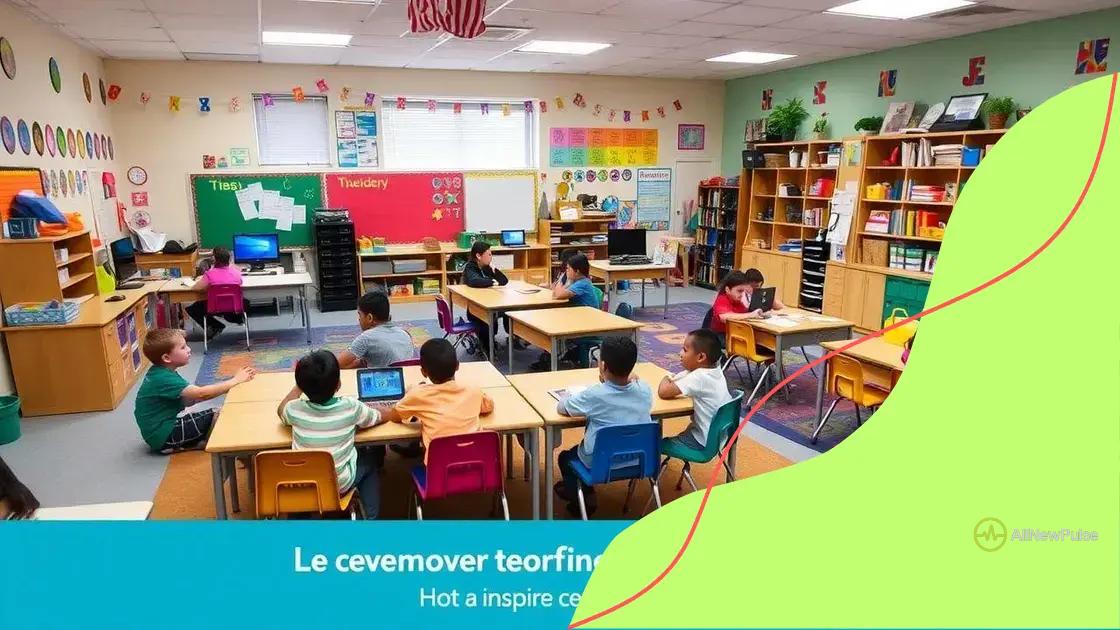
Creating an inspiring classroom environment is essential for fostering creativity and motivation among students. A well-designed space can spark interest and enhance learning. Simple changes can lead to a more inviting and engaging atmosphere.
Importance of Classroom Design
The layout and decoration of a classroom significantly affect students’ mood and focus. A comfortable space encourages interaction and collaboration. Incorporating elements that resonate with students’ interests can make a real difference in engagement levels.
- Use bright colors to stimulate creativity
- Add flexible seating arrangements to promote group work
- Include plants and natural light for a fresh atmosphere
Moreover, displaying students’ artwork and achievements can instill pride and encourage participation. When students see their work valued, they are more likely to invest in their contributions.
Incorporating Technology
Integrating technology in the classroom can also inspire innovative thinking. Providing access to tools like tablets or interactive whiteboards encourages engagement with the material. As students explore digital resources, they enhance their learning experience and develop critical skills needed for the future.
Additionally, creating learning zones within the classroom can promote various styles of learning. A quiet area for reading, a collaborative space for group projects, and a hands-on station for experiments offer different environments that cater to all students.
A classroom rich in resources and support fosters a sense of community. Encouraging cooperation and respect among students builds a positive atmosphere where everyone can thrive. When students feel supported, they are more likely to take risks and explore their creativity.
Integrating technology to foster creativity
Integrating technology to foster creativity is a key strategy in modern education. With the right tools, teachers can enhance learning experiences and encourage innovative thinking among students. Technology can open up new avenues for creative expression and collaboration.
Utilizing Digital Tools
Digital tools such as tablets, computers, and educational apps allow students to create and share their work easily. For example, using graphic design software can enable students to visualize their ideas in new ways. This process not only improves their creativity but also builds important skills.
- Facilitates easy access to resources
- Encourages collaborative projects
- Supports various learning styles
By incorporating multimedia projects, students can engage with the material in a meaningful way. They can create videos, podcasts, or digital presentations that showcase their understanding. This practice also encourages peer discussion and feedback, enriching the learning experience.
Promoting Interactive Learning
Interactive learning platforms can enhance student engagement. Tools like online discussion boards or educational games create an immersive environment. When students participate actively, they are likely to develop a deeper understanding of concepts while having fun.
Moreover, technology allows for personalized learning experiences. Students can explore topics at their own pace and delve into areas of interest. This flexibility can motivate learners to express themselves creatively without the constraints of a traditional classroom setting.
Additionally, implementing virtual reality or augmented reality in lessons can stimulate the imagination. These technologies provide unique experiences that can transport students to different environments, making learning more impactful.
Encouraging collaboration and idea sharing
Encouraging collaboration and idea sharing is essential for enhancing creativity in the classroom. When students work together, they can build on each other’s strengths and generate innovative solutions. A collaborative environment fosters respect and understanding among peers, creating a sense of community.
Creating Group Projects
Group projects are an effective way to encourage collaboration. Teachers can assign tasks that require students to work together towards a common goal. This setup allows students to share their ideas and develop problem-solving skills. During group work, students can:
- Take on different roles based on their strengths
- Communicate openly and share feedback
- Learn from each other’s perspectives
As they exchange ideas, students can create more comprehensive and creative outcomes than they might individually. This process not only enhances learning but also builds social skills.
Utilizing Technology for Collaboration
Technology plays a significant role in facilitating collaboration. Tools like online forums, collaborative documents, and video conferencing platforms enable students to work together, even from different locations. These tools make it easy for students to brainstorm, revise, and finalize their projects effectively.
In addition to technology, setting up a classroom that encourages open communication is vital. Arranging furniture in a way that promotes group discussions can significantly improve collaboration.
Encouraging students to share their ideas in various formats, such as presentations or digital portfolios, allows for deeper engagement. When students present their work, they not only showcase their creativity but also inspire and motivate others.
In conclusion, cultivating an environment that values collaboration and idea sharing leads to greater creativity and innovation in education. When students feel comfortable expressing their thoughts, they contribute to a more dynamic and enriching learning experience.
FAQ – Frequently Asked Questions about Fostering Creativity and Innovation in the Classroom
How can collaboration enhance students’ learning experience?
Collaboration encourages teamwork and helps students learn from each other, leading to improved problem-solving skills and creativity.
What role does technology play in fostering creativity?
Technology provides tools for creative expression, allows access to diverse resources, and supports interactive learning, enhancing student engagement.
How can teachers create an inspiring classroom environment?
Teachers can create an inspiring environment by using vibrant colors, flexible seating, and displaying student work to promote a sense of belonging.
Why is it important to foster innovative thinking in students?
Fostering innovative thinking equips students with essential skills for the future, such as critical thinking and adaptability, preparing them for real-world challenges.
